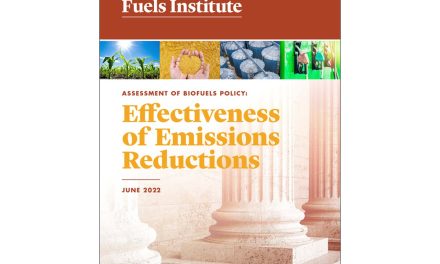By Nancy Yamaguchi, PhD
There are many factors that influence trade in oil and oil products, but chief among them is one simple idea: oil is a liquid. It flows along the path of least resistance. It flows from a burgeoning pool to a thirsty pool. It flows from where it is not needed to where it is needed. It must be contained as it flows, in pipelines, tankers, trucks and the like. It must avoid blockages to its free flow. And because oil is the largest commodity in world trade, it tends to flow along the least-cost pathways to reach the highest value end uses. These pathways are influenced by public policy, including issues of health and safety, environmental protection, right of way, social justice and international relations. The laws build canals, dams, weirs and the like to control the flow and perhaps to cope with floods.
In the Western Hemisphere, geography, economics and politics have shaped an extensive network of oil infrastructure. As an example, the 800-mile long Trans-Alaska Pipeline System (TAPS) was built only after the 1973 – 1974 oil price shock. The high prices and new concern over oil security made it possible to develop Alaska North Slope (ANS) crude and build TAPS. The project was permitted only after lengthy negotiations with Native American groups and conservationists, many of whom still believe the project was a mistake. Once completed, additional infrastructure was built to allow the transit of oil to refineries in the U.S. West Coast, the U.S. Gulf Coast, and the U.S. Virgin Islands. The Trans-Panama Pipeline was opened in 1982 to facilitate the transport of crude from the Pacific Ocean side of Central America to the Caribbean Sea. When ANS production declined, this pipeline was closed, and in later years it was reversed. It was not considered economically or politically feasible to build a pipeline all the way from the North Slope of Alaska, through Canada, and onward to U.S. refineries.
Similarly, the topography of the Americas makes it difficult to build long pipelines running east to west or west to east. The Rocky Mountains form a natural north-south running barrier in Canada and the United States, as do the Coast Mountains, the Cascade Range and the Sierra Nevada mountains. The Sierra Madre range bisects much of Mexico. The Andes separate the West Coast of South America from the rest of the continent. In Canada, there is only one pipeline that runs from east to west across the Rocky Mountains, the Trans Mountain Pipeline. In the U.S., there are none. Most of the pipelines run north and south. This also holds true in Mexico and Latin America. In North America, there are huge reserves of oil, oil sands and shale oils in the central part of Canada and the United States. The North American oil transport network may be likened to a river system, where most to the flow heads south to the U.S. Gulf Coast, where it meets the sea and must change its transport mode. Within the center of North America, the shale boom caused the riverbanks to flood, and there were not enough tributaries to reach new destinations. New trade patterns had to emerge, and most of these have focused on trade links within the Americas, creating a higher degree of Western Hemisphere oil market integration.
The Americas account for approximately 33% of the world’s oil demand, 33% of its proven oil reserves, 30% of its oil production and 28% of its oil refining capacity. The bulk of this is concentrated in North America, with the exception of reserves, where Venezuela is the leader. North America’s oil market has been strongly tied to the markets of Europe and the Middle East. In many ways, it is a simpler matter to ship oil across the North Atlantic Ocean than it is to ship oil across the South Atlantic Ocean, or to ship oil across the Pacific Ocean, particularly when a Panama Canal crossing is involved. Nonetheless, oil trade is flourishing within the Western Hemisphere and a regional petroleum market is becoming more distinct.
In this article, we liken the flow of oil to a complex, far-reaching river system. It is not always clear what will happen when a new dam is built or a canal is widened or rerouted. Demand for the liquid remains, however, so it will continue to flow. If a dam is removed, what will happen to the waterways downstream? Some of the natural flows in the Western Hemisphere have been reinforced by economics, politics and geography, but the complete free flow of crude oil is stymied by those same factors. In this article, we will discuss how crude flows have changed because of the shale boom in the U.S., the growth in Canadian output, the languishing of Mexican and Venezuelan output, and the strict controls on exports of U.S. domestic crudes. We will also trace the impacts into the refining side and show the impacts on product trade.
Western Hemisphere Crude Trade
The advances in horizontal drilling and hydraulic fracturing have had a profound impact on the U.S. and greater Western Hemisphere oil balance. In the year 2000, the United States produced 5822 kbpd of crude oil. During the first eight months of 2015, crude production averaged 9387 thousand barrels per day (kbpd), an increase of 3565 kbpd. This gain is nearly on a par with Iran’s total output in 2014, which was 3117 kbpd, according to the OPEC Secretariat. It was more than the output of Iraq (3110 kbpd,) Kuwait (2867 kbpd,) and Venezuela (2682 kbpd). Essentially, therefore, the increase in U.S. production has displaced the output of an entire OPEC country. During the same time period, Canadian output grew by 1589 kbpd, greater than the 2014 output of Algeria (1193 kbpd), Libya (480 kbpd) and Qatar (709 kbpd).
For many years, forecasts of U.S. oil supply assumed that imports would continue to grow, and that the U.S. would become more reliant on the Middle East. This was to be supplemented by crudes from Canada, Mexico and Venezuela. Figure 1 presents the trend in U.S. crude imports from the top three Western Hemisphere oil exporters, as reported by the U.S. Energy Information Administration (EIA). As the figure illustrates, in the year 2000, Canada, Mexico and Venezuela were roughly equal in the amount of crude oil they exported to the U.S., all in the vicinity of 1.2–1.3 million barrels per day (mmbpd). For the three together, the total was approximately 3.9 mmbpd. U.S. crude imports from the Persian Gulf and Africa were close to this amount, at approximately 3.8 mmbpd. Since then, however, Venezuelan and Mexican crude exports to the U.S. have fallen to approximately 0.7 mmbpd each. Both have had political and economic conditions that have constrained exports. In contrast, Canadian exports to the U.S. have grown to 3.1 mmbpd.










